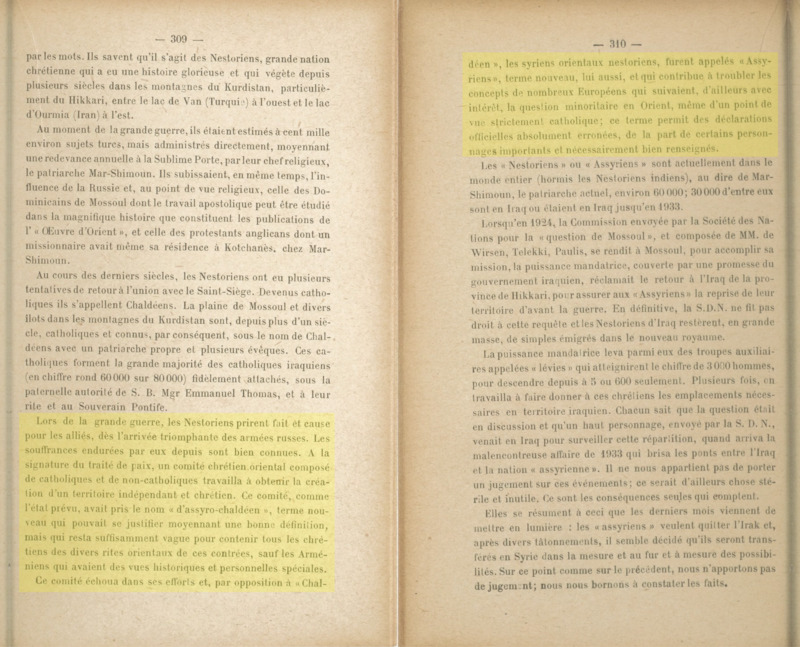-
Title
-
Oeuvre d'Orient
-
Creator
-
Oeuvre d’Orient (France)
-
Date
-
August 1, 1935
-
Description
-
"During the Great War, the Nestorians sided with the Allies from the triumphant arrival of the Russian armies. The sufferings they endured from then on are well known. At the signing of the peace treaty, an Eastern Christian committee, composed of Catholics and non-Catholics, worked to obtain the creation of an independent Christian territory. This committee, like the proposed state, adopted the name “Assyro-Chaldean,” a new term that could be justified with a good definition, but which remained sufficiently vague to include all the Christians of the various Eastern rites in those regions, except the Armenians, who had particular historical and personal aims. The committee failed in its efforts, and in opposition to “Chaldean,” the Eastern Syrian Nestorians were called “Assyrians,” also a new term, which helped to confuse the concepts of many Europeans who were following, with interest, the minority question in the East, even from a strictly Catholic point of view; this term allowed absolutely erroneous official statements by certain important and necessarily well-informed figures."
The author describes the Nestorians, an Eastern Christian population long based in the Hakkari mountains between Lake Van and Lake Urmia. They lived under Ottoman rule but dealt directly through their patriarch Mar Shimun and were influenced by Russia as well as by Dominican and Anglican missions. Over the centuries some communities reunited with Rome and became Chaldeans, a Catholic church with its own patriarch and bishops; the author says most Iraqi Catholics belonged to this group and estimates roughly sixty to eighty thousand at the time.
During and after the First World War a mixed Eastern Christian committee tried to obtain an independent Christian territory. For this project it adopted the new umbrella label “Assyro-Chaldean,” which the author calls vague enough to cover many Eastern Christian groups in the region except the Armenians, and the effort failed. In the same period the Eastern Syrian Nestorians began to be called “Assyrians,” another new label. The author argues that these terms led Western observers, diplomats, and even churchmen to confuse identities and make erroneous official claims. He adds that there were about sixty thousand Nestorians worldwide then (not counting the Indian Nestorians), around thirty thousand of whom were in Iraq until 1933. A League of Nations mission in 1924 examined their case but promised solutions did not materialize, and after the 1933 crisis with Iraq many among them wished to leave for Syria. The overall message is that the recent political and ecclesiastical names “Assyro-Chaldean” and “Assyrian” blurred distinctions among Eastern Christians and generated misunderstanding in European and official discourse.
-
Language
-
French
-
Publisher
-
Bureau de I’Oeuvre d’Orient, August 1, 1935, p. 309–310
-
gallica.bnf.fr
-
Subject
-
Nestorian name change to ''Assyrian''


